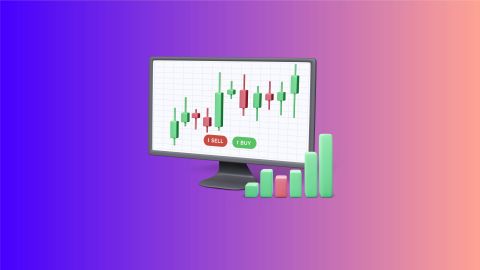The strike price is an important component of call and put options. This variable defines the price at which the option holder can purchase or sell the underlying security.
Let us learn about this concept and its significance to traders and see a few examples.
What is a strike price?
The strike price, sometimes also called the exercise price, is a fundamental concept in options trading. It represents the pre-determined price at which the holder of an options contract has the right to buy (in the case of a call option) or sell (in the case of a put option) the underlying asset. This fixed price is agreed upon at the inception of the options contract and remains constant throughout its lifespan.
Imagine the strike price as a point of reference, a pivot around which the entire options trade revolves. It serves as a pivotal factor in determining the potential profitability or loss of an options position. To understand its significance, it is crucial to explore how the strike price interacts with the current market price of the underlying asset, often referred to as the spot price.
The relationship between the strike price and the spot price is a vital factor in options trading. It determines the "moneyness" of an option, a concept that classifies options into three primary categories: in-the-money (ITM), at-the-money (ATM), and out-of-the-money (OTM).
- In-the-money (ITM) options: When the strike price of an option is favourable compared to the current market price, it is considered in-the-money. For call options, this means the strike price is lower than the market price, making it more profitable to exercise. Conversely, for put options, an ITM option has a strike price higher than the market price, making it attractive to exercise.
- At-the-money (ATM) options: ATM options have a strike price that aligns precisely with the current market price of the underlying asset. They are essentially in a neutral position, with their moneyness balanced.
- Out-of-the-money (OTM) options: When the strike price of an option is less favourable compared to the current market price, it is considered out-of-the-money. For call options, the strike price is higher than the market price, making it unattractive to exercise. For put options, an OTM option has a strike price lower than the market price, rendering it unprofitable to exercise.
An option's moneyness directly impacts its value. ITM options typically command a higher premium because they have an intrinsic value, while ATM and OTM options rely on time value. In other words, the closer an option is to being in-the-money, the more valuable it is.
Importance of strike price
The strike price plays a key role in options trading by creating a wider window into the underlying prices of an asset in the stock market. It allows the trader to better understand the breakeven point of an asset and make an informed choice when and when not to sell/buy it.
The key rule of strike pricing says that the proximity between the strike price and stock price determines whether an option is worth it or not. Strike price sets the stage for deciding the value of an option.
Let’s take an example to better understand the importance of strike price. Say you buy an asset at a stock price of Rs. 200, and you keep the strike price at Rs. 175 for future sale. If the stock price of the asset goes down to Rs. 140, you will make a profit, and if the stock price goes up to Rs. 240, you will incur a loss.
Strike price vs spot price
Here is a breakdown of the key differences between strike price and spot price:
1. Timing
- Spot price: Represents the current market price at any given moment.
- Strike price: Remains fixed and does not change throughout the life of the options contract.
2. Use
- Spot price: Serves as the basis for determining the value of the underlying asset and is the price at which immediate buying or selling occurs in the open market.
- Strike price: Establishes the conditions under which the options contract can be exercised, defining the price at which the underlying asset can be bought or sold at a future date.
3. Volatility
- Spot price: Experiences constant fluctuations due to market dynamics, news, and supply and demand forces.
- Strike price: Remains unchanged, providing a stable reference point for the options contract.
4. Options valuation
- Spot price: Directly influences the intrinsic value of options. For call options, the spot price's relationship to the strike price determines whether the option is in-the-money (ITM), at-the-money (ATM), or out-of-the-money (OTM).
- Strike price: Defines the terms of an options contract and plays a crucial role in options pricing. It is the key factor in determining the potential profitability of the options trade.
5. Execution
- Spot price: Pertains to immediate buying or selling of the underlying asset in the open market.
- Strike price: Pertains to the future execution of the options contract, where the option holder may choose to buy or sell the underlying asset at the strike price.
Strike price example
Suppose you are an investor interested in XYZ Ltd., and you believe that the company's stock, currently trading at Rs. 50 per share, will increase in value in the near future. You decide to participate in the options market by purchasing a call option on XYZ Inc. stock.
- The current market price of XYZ Inc. stock: Rs. 50 per share (also known as the spot price).
- You purchase a call option with a strike price of Rs. 60. This means that you have the right, but not the obligation, to buy shares of XYZ Inc. stock at Rs. 60 per share. The Rs. 60 is the strike price, also referred to as the exercise price.
Now, let us examine two scenarios based on the strike price:
1. Scenario 1 - The stock price Increases
Several months later, XYZ Inc. announces strong earnings, and its stock price surges to Rs. 70 per share. In this scenario:
- You have the option to buy shares of XYZ Inc. at the predetermined strike price of Rs. 60 per share, even though the current market price is Rs. 70.
- By exercising your call option, you can buy shares at Rs. 60 and immediately sell them at the market price of Rs. 70, resulting in a profit of Rs. 10 per share (Rs. 70 - Rs. 60).
2. Scenario 2 - The stock price stays the same or decreases
- You are not obligated to exercise your call option.
- You may choose not to buy the stock at the Rs. 60 strike price, as it is more expensive than the current market price.
In both scenarios, the strike price of Rs. 60 serves as the reference point. It determines the conditions under which you can potentially profit from the call option. If the market price is above the strike price, the option is "in-the-money," and exercising it can lead to a profit. If the market price is below the strike price, the option is "out-of-the-money," and exercising it may not be advantageous.
Factors that affect your strike price
Now that you are aware of the importance of the strike price, you must know about the factors that influence it. Here’s a list of factors affecting strike prices that you must consider:
- Implied volatility: Implied volatility refers to factors that affect the prices of a stock, such as government policies, a company’s rules of trading, global factors, etc. Volatility in the market also affects the strike prices.
- Your risk appetite: Option trading contracts feature different levels of risks that affect the strike price. For instance, if you opt for a call option and the stock prices go up, it means an ITM (in-the-money) call will offer more value than an ATM (at-the-money) or OTM (out-of-the-money) call.
- Risk-reward payoff: The risk-reward payoff is the money you have invested and the profit you are expecting. Your strike price is largely impacted by the difference between these two.
How to select the right strike price?
Determining the strike price of an asset plays a crucial role in setting your trade for profit. Let us look at the factors that you must consider before selecting the strike price:
- Liquidity: The thumb rule of option trading states that strike prices offer support and resistance levels for an asset if it is heavily traded. This helps you determine an asset's liquidity. Remember that higher liquidity offers a higher profit margin.
- Time horizon: If you are a short-term trader, consider opting for a strike price that is closer to the market price. If you are in the game for the long run, a strike price further away from the market price might yield positive results.
- Premiums and breakevens: First, evaluate the breakeven point for the capital and premium you have invested in the asset. Then, try to keep your strike price at a level that allows you to stay close to the breakeven point.
- Bid/ask spread: Contrary to the popular belief of only evaluating the last traded price, a smart trader would also check the bid/ask price.
Conclusion
In summary, the strike price is a pivotal component in the world of options trading. It defines the terms under which an option can be exercised and plays a significant role in determining an option's value. Understanding the moneyness of options, the relationship between the strike price and the spot price, and their impact on potential profits and losses is essential for traders aiming to navigate the complexities of the options market effectively. By comprehending the significance of the strike price, traders can make more informed decisions and enhance their ability to manage options portfolios strategically.




